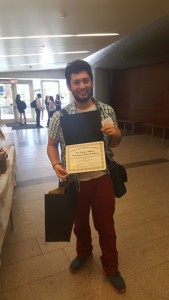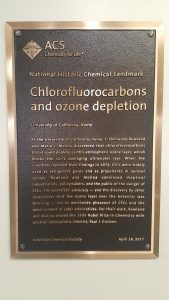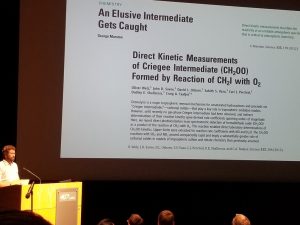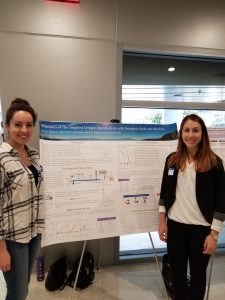We are delighted to welcome high school teachers Larry Sepulveda (Rosemead High School) and Linda Kazibwe-James (Whittier Christian School) to the group. Larry and Linda are participating in our NSF-funded ‘Teacher in Residence’ outreach program this year, and will be working with us in the lab for the next month. The program aims to provide high school teachers with hands-on experience of life in a research laboratory.
Author Archives: Craig Murray
Liz wins Lee Fellowship
Time-resolved photochemistry paper in PCCP

Our latest paper, exploring the photochemistry of acetaldehyde to form CH3 + HCO across a broad range of wavelengths, has been published in PCCP. We used a combination of time-resolved ion imaging, with nanosecond and picosecond pulsed lasers, and photofragment excitation action spectroscopy to identify three distinct dissociation mechanisms. At long wavelengths, dissociation occurs statistically on the S0 surface after many tens of nanoseconds. Dissociation at intermediate wavelengths is dominated by relatively fast dissociation on the T1 surface, leading to fast-moving CH3 radicals. At short wavelengths, a new pathway opens that is assigned to dissociation on the S0 surface, accessed via a conical intersection.
The article can be accessed here: 10.1039/c7cp02573d
This article was selected as part of the 2017 PCCP HOT Articles themed collection.
Early summer update
Our building, Rowland Hall, was dedicated as a National Historic Chemical Landmark by the ACS on April 18th, in recognition of the Nobel Prize-winning work performed there by Sherry Rowland and Mario Molina that identified the role of chlorofluorocarbons in stratospheric ozone loss. A two-day symposium was held at the Beckman Center on April 18th–19th to mark the occasion, featuring distinguished guest speakers from academia, and local AirUCI contributions. Kara and Saswata Roy from Prof. Filipp Furche’s group gave a great joint TED-style presentation explaining how a combination of experiment and theory can provide insights into molecular photochemistry.
On May 12th, we attended the 34th Informal Symposium on Kinetics and Photochemical Processes in the Atmosphere held at UCSD. I gave a talk describing some of our work on the reactions of Criegee intermediates with trace atmospheric gases, Sara presented a poster on the same, and Kara loitered networked. Aside from learning some exciting new science, we also discovered that the tacos at Puesto in La Jolla are excellent.
Finally, we bade a fond farewell to Ben who has moved on to pastures new. This month he begins a post-doctoral position at Lawrence Berkeley National Lab, working with Dr. Oliver Gessner and Prof. Steve Leone in the Ultrafast X-Ray Science Laboratory. We wish him all the best in the Bay Area and have no doubt that he will be tremendously successful there.
Ben’s PhD defense
Congratulations to Ben, who gave a great presentation and successfully defended his thesis yesterday!
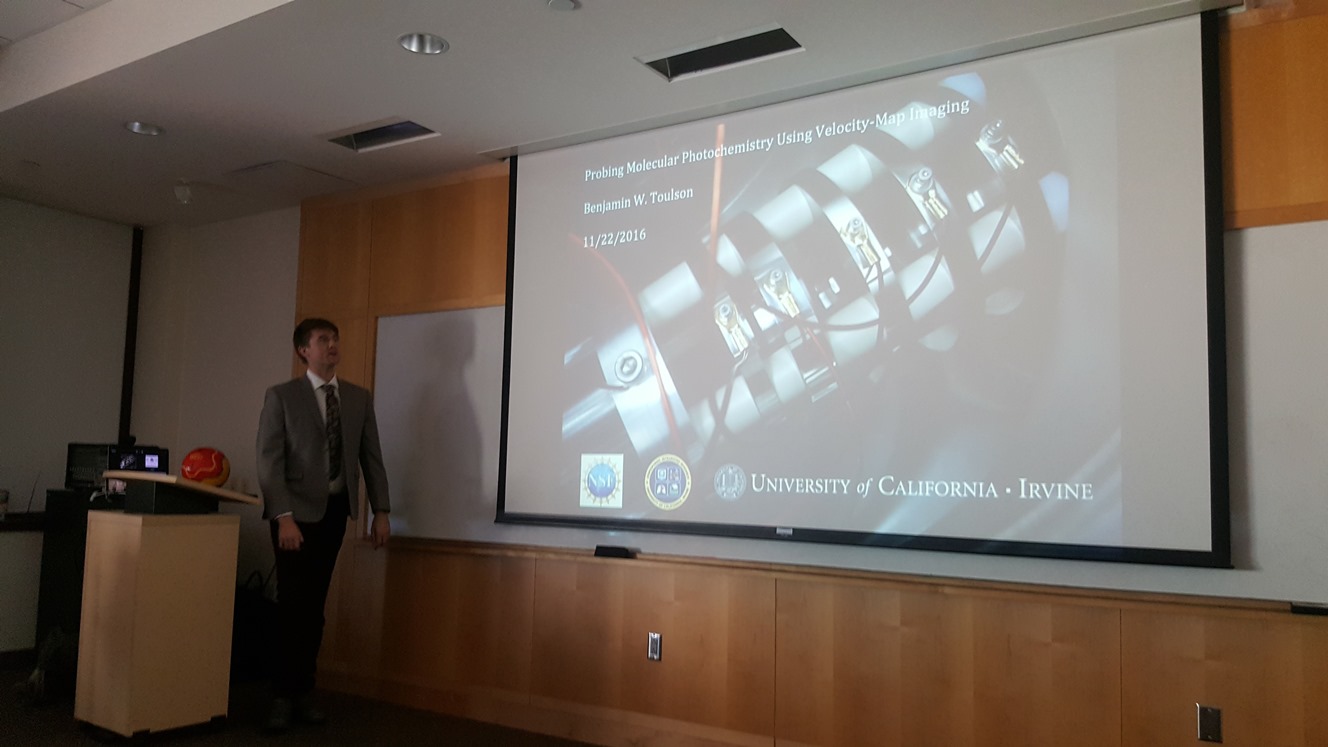
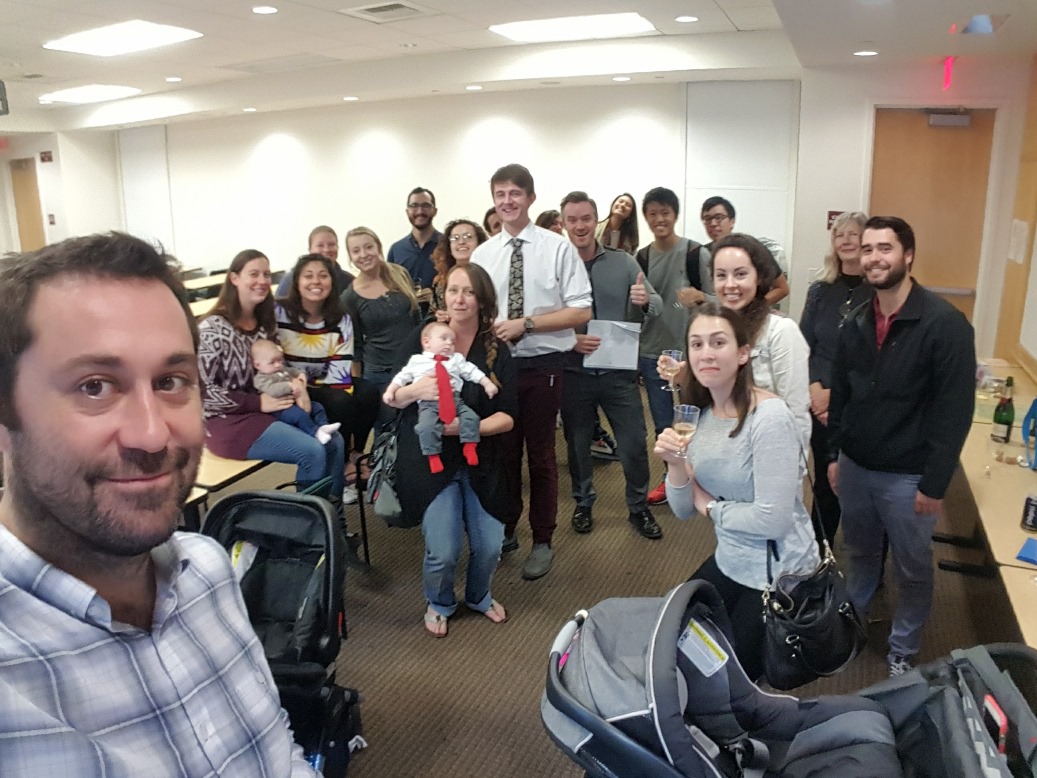

[Photo credit: Stacey Hughes]
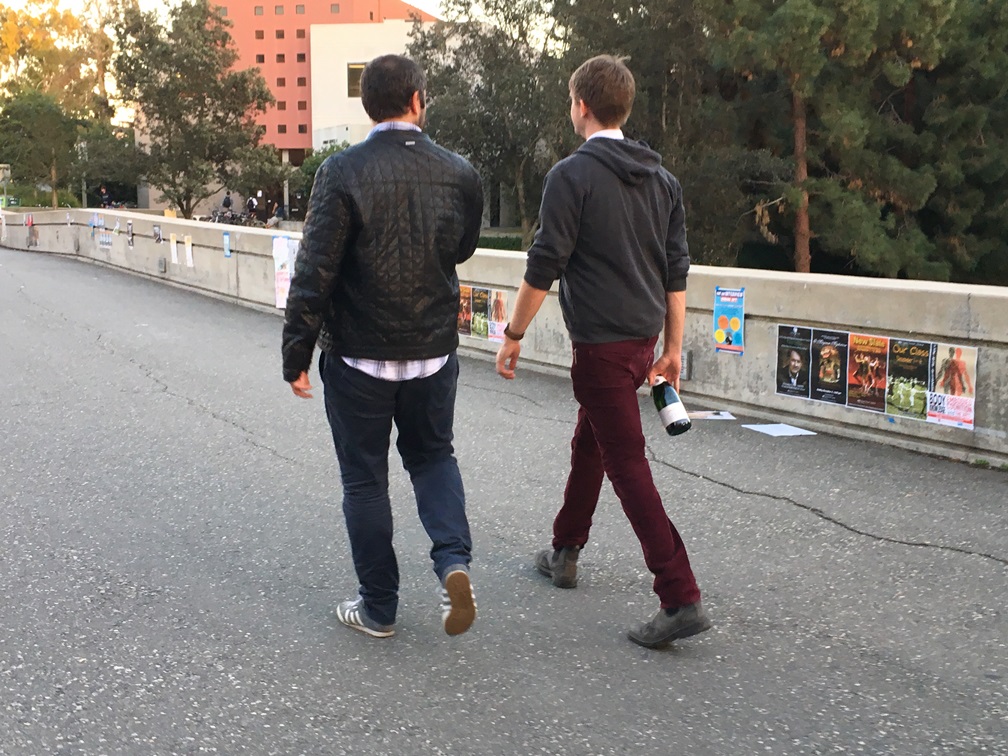
NSF research grant awarded
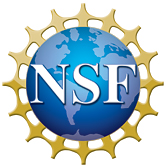 We have been awarded $396,693 by the Chemistry Divison of the National Science Foundation for a three-year project titled, “Unravelling Unconventional photochemistry using time- and state-resolved imaging.” The grant will support our fundamental photochemistry research, in which we use velocity-map ion imaging to explore ‘unusual’ photochemical mechanisms in small molecules.
We have been awarded $396,693 by the Chemistry Divison of the National Science Foundation for a three-year project titled, “Unravelling Unconventional photochemistry using time- and state-resolved imaging.” The grant will support our fundamental photochemistry research, in which we use velocity-map ion imaging to explore ‘unusual’ photochemical mechanisms in small molecules.
OCS PHOFEX paper published in J. Phys. Chem. A
 Our new paper published in J. Phys. Chem. A uses PHOtoFragment EXcitation (PHOFEX) spectroscopy to pick apart the first absorption band of OCS, the most abundant sulfur-containing molecule in the atmosphere. The PHOFEX spectra obtained probing electronically excited S(1D) and ground state S(3P) atoms are distinctly different; the former is broad and unstructured, while the latter shows distinct resonances that can be attributed to vibrational structure following direct excitation of a quasi-bound triplet state.
Our new paper published in J. Phys. Chem. A uses PHOtoFragment EXcitation (PHOFEX) spectroscopy to pick apart the first absorption band of OCS, the most abundant sulfur-containing molecule in the atmosphere. The PHOFEX spectra obtained probing electronically excited S(1D) and ground state S(3P) atoms are distinctly different; the former is broad and unstructured, while the latter shows distinct resonances that can be attributed to vibrational structure following direct excitation of a quasi-bound triplet state.
The article can be found here: 10.1021/acs.jpca.6b06060
“Hot Paper” in Angewandte Chemie
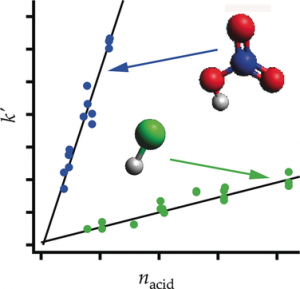
Our new paper on the kinetics of reactions between the simplest Criegee intermediate, CH2OO, and the inorganic acids HCl and HNO3 has been published as a “hot paper” in Angewandte Chemie International Edition. The reaction with HNO3 in particular is likely to be an important sink in polluted environments. You can read it here: 10.1002/anie.201604662
UPDATE: A news article highlighting our paper has been published on ChemistryViews.
ACS PRF New Directions grant
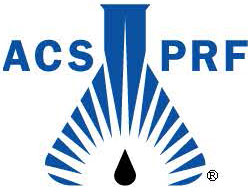 We have been awarded a New Directions grant from the American Chemical Society’s Petroleum Research Fund. The $110,000 award will provide seed funding for a new project titled, “Vibrational Pre-Reactivity: Exploiting Complexes to Probe Reactive Resonances.” We will combine molecular beam techniques with velocity-map ion imaging to study the dynamics of vibrational pre-reaction in atom-molecule van der Waals complexes.
We have been awarded a New Directions grant from the American Chemical Society’s Petroleum Research Fund. The $110,000 award will provide seed funding for a new project titled, “Vibrational Pre-Reactivity: Exploiting Complexes to Probe Reactive Resonances.” We will combine molecular beam techniques with velocity-map ion imaging to study the dynamics of vibrational pre-reaction in atom-molecule van der Waals complexes.
SCURC prize for Vahe
Congratulations to Vahe, who won a Best Oral Presentation prize at the Southern California Undergraduate Research Conference held at CSU Long Beach on April 23. He impressed the judges with his talk describing the application of cavity ring-down spectroscopy to probe non-thermal chemical reactivity.
